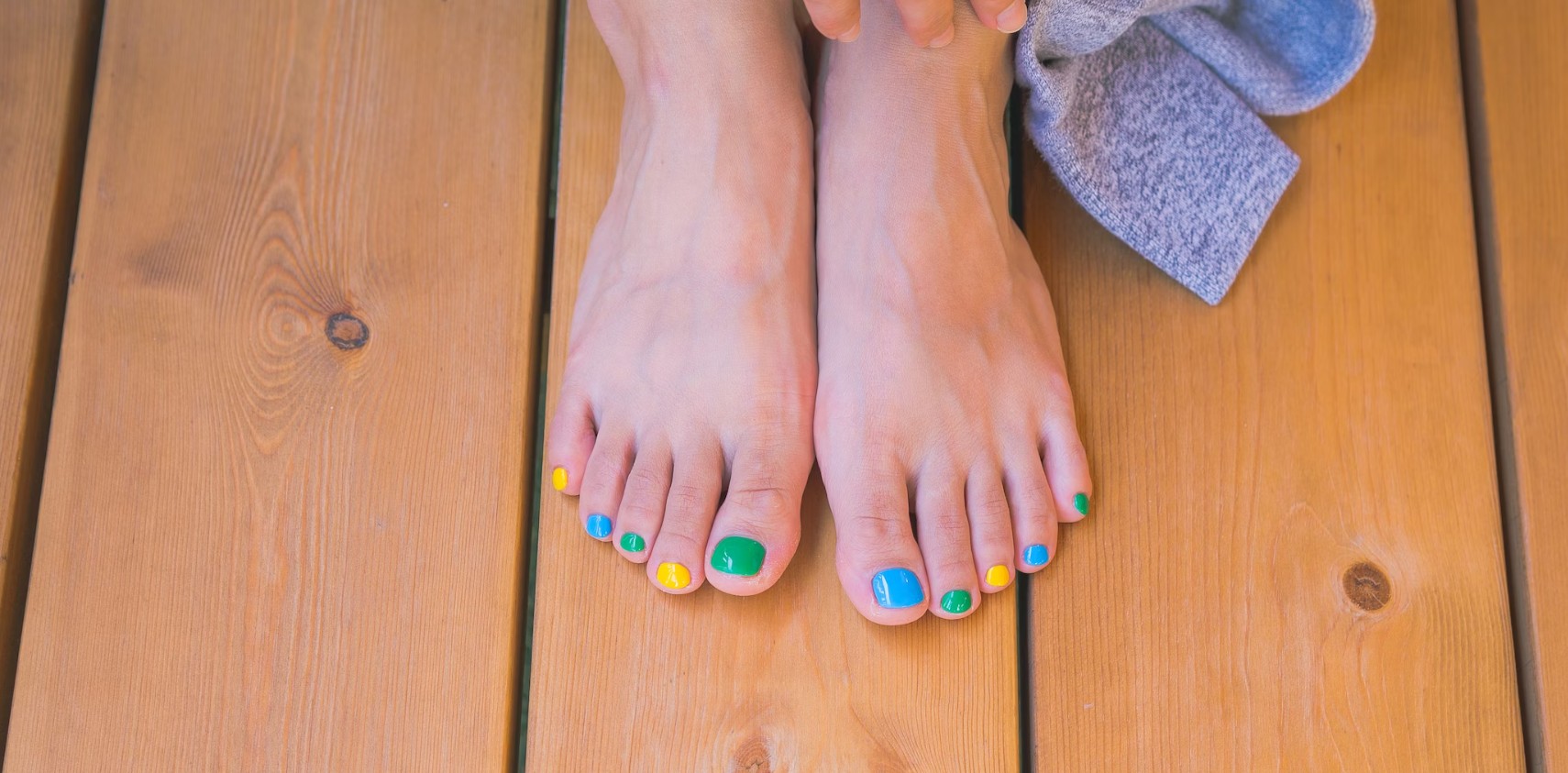Comprehensive Guide to Pinky Toenail Split: What You Need to Know
A pinky toenail split is more than just a cosmetic problem. It can indicate a serious medical condition that requires treatment. The good news is that there are many ways to prevent, treat, and manage this condition.
Understanding Pinky Toe nail Split
When you have a pinky toe split, your nail has cracked or broken in an area that’s typically not visible. It may be more difficult to notice than other types of toenail splits because it doesn’t affect the appearance of your nails as much as they do when they’re longer on one side than another (which is called “clubbing”).
However, if a pinky toe split goes untreated for too long and becomes infected or inflamed over time, it could lead to pain and discomfort–and even infection if left untreated for too long. If this happens, see your doctor immediately so he or she can treat the problem before things get worse!
What is a Pinky Toenail Split?

(Source:wikipedia.org)
So, what exactly is a pinky toe split? It’s a crack in the nail of your pinky toe. This can happen to anyone and it’s not usually serious, but if you notice that your fifth toe has started to peel or separate from its nail bed (the area where it meets your foot), then it might be time to see your doctor.
The pinky toe is also known as the fifth toe because it sits on top of four other toes in order from smallest to largest: 1) Ring Finger 2) Middle Finger 3) Index Finger 4) Thumb.
Why is my Pinky Toenail split
There are a number of different factors that can cause pinky toenail splits. These include:
- Genetic factors. If you have a family history of this condition, you’re more likely to develop it yourself.
- Environmental factors. Pinky toe split can also be caused by exposure to cold weather or water; wearing ill-fitting shoes; trauma (such as stubbing your toe); and nerve damage from diabetes or other health conditions such as thyroid disease or Rheumatoid Arthritis which may result in poor circulation throughout your body including the toes
Sometimes, the cause of your pinky toe nail split can’t be identified. This is called an idiopathic split and it’s usually caused by an underlying medical condition that hasn’t been diagnosed yet.
Genetic Factors

Genetic factors can play a role in the development of pinky toenail split. A few genetic conditions are known to cause it, including Down syndrome and Turner syndrome. The latter is an X chromosome disorder that affects females; it’s characterized by short stature and other symptoms like heart defects and kidney problems.
A common cause of pinky toenail splits is alopecia, which is hair loss due to any number of reasons such as stress or hormonal changes during pregnancy.
Environmental Factors
There are a number of environmental factors that can contribute to your pinky toe nail split. Lack of moisture and ventilation in the air, as well as circulation in your feet (or lack thereof), can cause the skin around your toes to dry out. This can lead to cracks or tears in the nail bed, which makes it more susceptible to infection.
Poor diet is another common cause of nail splits because it affects both how quickly you heal from injuries and how healthy your body is overall. If you aren’t getting enough vitamins and minerals through food sources such as fruits and vegetables, then you may be at risk for developing an infection due to poor circulation or weak immune system function–and this will make healing difficult if not impossible altogether!
Health Conditions
There are many health conditions that can cause a pinky toenail split. Diabetes, lupus and psoriasis are just some of the more common causes. Other medical issues that may lead your doctor to suspect a pinky toenail split include:
- Infections such as fungal infections or bacterial infections (like staph)
- Thyroid disease
- Scleroderma
- Psoriatic arthritis
- Flat feet
Raynaud’s syndrome Burns or trauma to the toe Diabetes is the most common cause of a pinky toenail split. If you have diabetes, you are more likely to develop peripheral neuropathy, which can lead to a small crack in your nail.
It is important to note that there are many other causes of a pinky toenail split. If you are concerned about why your pinky nail is splitting, visit your doctor for an examination and diagnosis.
Symptoms and Diagnosis
Pinky toe nail split symptoms include pain, swelling and redness. The separation of the nail from its bed can also be seen on examination.
A biopsy may be taken to confirm a diagnosis of pinky toe nail split if there is any doubt about its cause or if other medical conditions are suspected as being responsible for your symptoms.
Symptoms Associated with Pinky Toenail Split
Pinky toenail split is a common condition that affects the pinky toe. The symptoms include pain, swelling, and redness.
The severity of these symptoms can vary from mild to severe. For example:

- Pain – A person experiencing mild pain may feel discomfort when walking or standing on their feet for long periods of time. Someone with severe pain may experience intense throbbing sensations in their pinky toe whenever they move it at all (even if they’re just shifting their weight from one foot to another).
- Swelling – Mild swelling could cause an individual’s pinky toe nail bed area to look slightly swollen compared to other parts of the foot; however, severe swelling might make this part of your body appear significantly bigger than normal–it might even be hard for some people not only see but also reach behind them due to how big it has become!
When and How to Get a Diagnosis
If you have symptoms of pinky toe split, such as pain and swelling, see a doctor. It’s important to get a proper diagnosis so that your doctor can treat the condition appropriately.
If you’re not sure if what you have is really a case of pinky toe split or just an ingrown nail or another similar condition, it’s best to see a podiatrist instead of just going to an urgent care center or ER (although if this happens during normal office hours for your primary care physician, by all means go there). A podiatrist will be able to take x-rays and make sure nothing more serious is going on with your foot before they prescribe any treatment options. In addition, they’ll know how much time needs to pass between seeing other specialists like dermatologists (skin doctors) so as not to confuse their diagnosis with another possible condition that could require different treatments altogether!
Treatment Options
You have a few options when it comes to treating a pinky toe nail split. Some are medical, some are home remedies and some are lifestyle changes.
You can visit your doctor for treatment if you have an underlying condition that may be causing the problem or if you want to be sure that there is no infection present in the nail bed or surrounding skin. Your doctor may prescribe an antibiotic cream or ointment, which can help treat any infections present in your toes’ skin (this is especially true if there is pus coming from them). If nothing else works for you then surgery may be needed to remove part of the damaged tissue before it falls off on its own accord; this will likely cause some scarring but should help prevent further damage from occurring as well as improve healing time overall because now there’s nothing left inside those cracks!
Home Remedies

- Use a nail file to smooth the edges. This is a good first step if you don’t want to visit your doctor, but it’s not going to do much more than make your toe look a little neater.
- Apply antifungal cream or ointment daily until you get rid of the fungus. Again, this can be done at home without having to see a doctor–but it may take longer than necessary for complete recovery if left untreated!
- Moisturize often with foot creams designed specifically for dry skin and apply lotion before bedtime so that it has time to absorb into your skin overnight while you sleep (don’t forget those toes!). Dryness causes cracked nails which makes them more susceptible to infection; moisturizing helps prevent this by keeping everything soft and flexible so nothing cracks easily under pressure from shoes or socks rubbing against them all day long.”
Medical Treatments
If you’ve tried all of the above, and still have a pinky nail split, it may be time to seek medical treatment. Your doctor might recommend:
- Nail surgery: This is a procedure that involves cutting out the damaged part of your nail and replacing it with healthy tissue from another part of your body (usually from an area near where the nail was split).
- Medication: Your doctor may prescribe antibiotics or painkillers if there’s been any infection in addition to splitting.
- Nail hardener: A gel that hardens and strengthens nails can help prevent further splits if applied regularly after trimming them back when they grow out again; however, this isn’t always effective at preventing further splits because it relies on frequent reapplication–and even then only works on some people!
Prevention Strategies
In order to prevent a pinky toe split, you should:
- Avoid exposure to chemicals. Chemicals are often used in the manufacturing of shoes and can cause irritation on the skin. If you work in an industry that uses these, try to wear protective gloves when handling them and avoid getting them on your feet as much as possible.
- Wear shoes that fit properly and are comfortable for long periods of time (especially if you’re on your feet all day). The best way to do this is by visiting an orthopedist who can recommend custom-made insoles for any problems with foot alignment or structure such as bunions or hammertoes; these insoles will provide extra cushioning where needed while also helping distribute weight evenly throughout each step taken so there isn’t excess stress placed onto any one part of your body at once – including those toes!
Lifestyle Changes

- Avoid wearing shoes that are too tight. Shoes with a wide toe box will help to reduce pressure on your pinky toe and make it more comfortable to walk in.
- Wear socks that are breathable, absorbent, and made of cotton or wool. Cotton or wool socks are best because they allow air circulation around the foot which helps prevent fungus from growing in between toes (this can lead to athlete’s foot).
- Avoid wearing socks with seams that rub against your toes–this can cause irritation and pain over time!
How Flat Feet Insoles Can Help
Flat feet insoles provide support and cushioning for those with flat feet, helping redistribute pressure evenly across the foot. By addressing abnormal foot mechanics, these insoles can indirectly contribute to protecting your pinky toenail from splitting. Here’s how:

Improved Weight Distribution: Flat feet insoles ensure that body weight is evenly distributed throughout the foot, reducing excessive stress on the pinky toe area.
Reduced Pressure on Toenails: The shock-absorbing properties of the insoles can lead to a decrease in direct impact on toenails, contributing to healthier nail growth.
Correct Foot Mechanics: Addressing biomechanical imbalances by using insoles can alleviate pressure on the outer parts of the foot, where the pinky toe is located.
Minimized Foot Fatigue: Cushioning and support provided by insoles can prevent foot fatigue, minimizing the impact on toenails during long periods of standing or walking.
Finding the Right Flat Feet Insole
When looking for a flat feet insole, keep these key factors in mind:
Arch Support: Choose insoles that provide proper arch support to correct your foot mechanics and evenly distribute pressure.
Material: Invest in durable and comfortable materials, such as memory foam, gel, or EVA foam, that will provide cushioning and shock absorption.
Fit: Consider the size, thickness, and shape of the insole to ensure compatibility with your footwear.
Conclusion
Whether you’re looking for a home remedy or a medical treatment, it’s important to know what causes pinky toe nail splits and how they can be prevented. In this article, we’ve covered everything from genetic factors to environmental influences. We hope that by reading this article you’ll feel more confident in your ability to take care of your nails!







